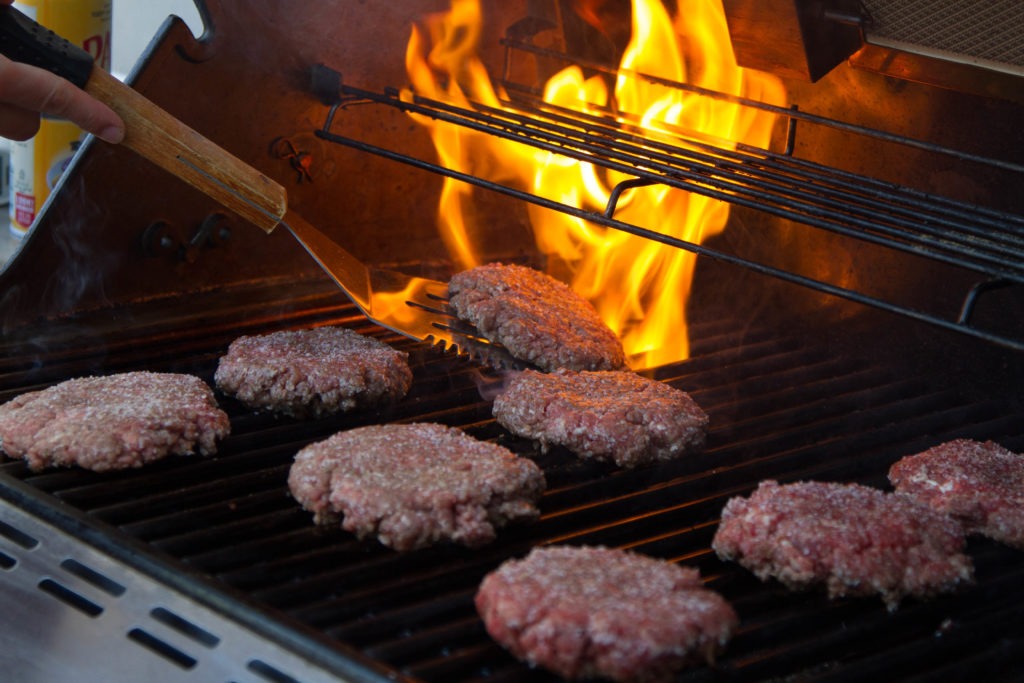
Nothing ruins a cookout like an overcooked piece of meat, and chances are, this season you’ll be at few backyard gatherings this spring and summer where dry meat is on the menu.
Rather than spend another summer choking down dry and flavorless burgers, steaks, and chicken breasts, pass these 3 tips on to your friends and neighbors so the outdoor fare will be up to snuff when you come ready to eat:
3 Tips for Successful Backyard Cookouts
1. Get a Thermometer
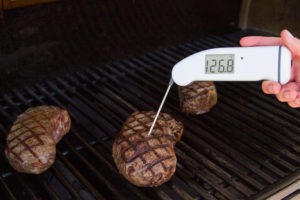 Ask any grilling guru and they’ll tell you their number one secret when cooking meat is to use an instant-read thermometer! Feeling for doneness with your finger will always leave you wondering how red the center of the meat really is (see our post, Verifying Temperatures in Your Turkey for more information on why temperature is the best way to determine the doneness of meat).
Ask any grilling guru and they’ll tell you their number one secret when cooking meat is to use an instant-read thermometer! Feeling for doneness with your finger will always leave you wondering how red the center of the meat really is (see our post, Verifying Temperatures in Your Turkey for more information on why temperature is the best way to determine the doneness of meat).
Cutting into a steak, burger, or chicken breast to check the color of the meat is not an accurate method to determine doneness (see our post, Safe Chicken Temperatures, Even if It’s Pink!). To help your friends and neighbors serve up perfectly cooked food at their next backyard shindig, they’re going to need a meat thermometer.
Temperature—The Only Way to Know Your Food is Done
There’s only one 100% reliable way that I know of to guarantee that your meat will be perfectly cooked every single time, and that’s by using a thermometer. An accurate instant-read thermometer like the Thermapen® by ThermoWorks. Get one. It’s a little pricey, but you will quickly make back that money by never overcooking another piece of expensive meat again. —Kenji Lopez-Alt, Serious Eats
The Thermapen Mk4 is our top recommended thermometer for grilling. Its high-speed readings guarantee that you’ll quickly see the internal temperature of your food without burning your hand over the grill. Its near instantaneous temperature readings and lab-grade accuracy will ensure that your meats are cooked perfectly time and time again. Having an accurate thermometer will increase your culinary confidence—so much that you may be hosting dinners and backyard cookouts every weekend!

2. Know How to Spot-Check Meat Temperatures
The reduced-tip probe of a Thermapen is ideal for spot-checking temperatures in smaller cuts of meat like chops, burgers, steaks, chicken breasts and even the thinnest pieces of fish—and its thermocouple sensor is located in the very 1/8-inch tip of the probe. The temperature readings are very precise. A Thermapen is perfect for small pieces of meat, and its 4.3-inch probe length also makes it the perfect tool for spot-checking large roasts and whole poultry. The internal temperature of food changes rapidly with the high cooking temperatures of grilling, and your super-fast Thermapen will give the speedy readings you need to know exactly when your food is done.
Temperature Gradients and The Thermal Center
Heat transfers from the outside of the meat inward. Through the duration of cooking, differences in temperature will exist from the exterior of the food to its thermal center. This difference in temperature is referred to as a temperature gradient. The lowest temperature inside the meat, or thermal center, will be in the area that is furthest from all exterior edges of the meat. That is the area that takes the longest for thermal energy to reach.
How to Spot-Check Temperatures with an Instant-Read Thermometer
Lift the meat off the grill with a sturdy pair of tongs and insert the Thermapen’s probe into the meat, going beyond its thermal center, then slowly pull back. You will see the temperature decrease as it moves to the thermal center, then increase as the sensor moves to the outside of the meat.
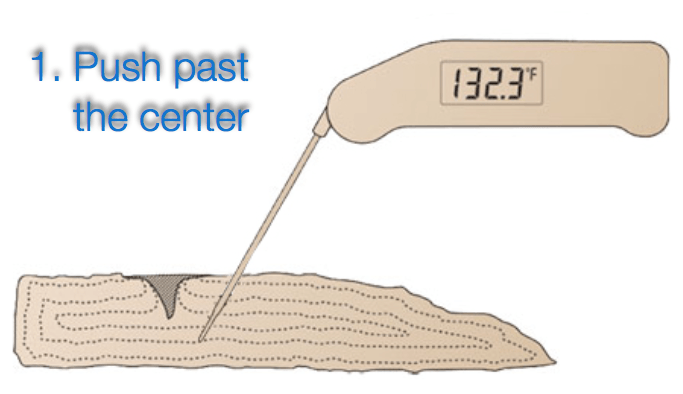
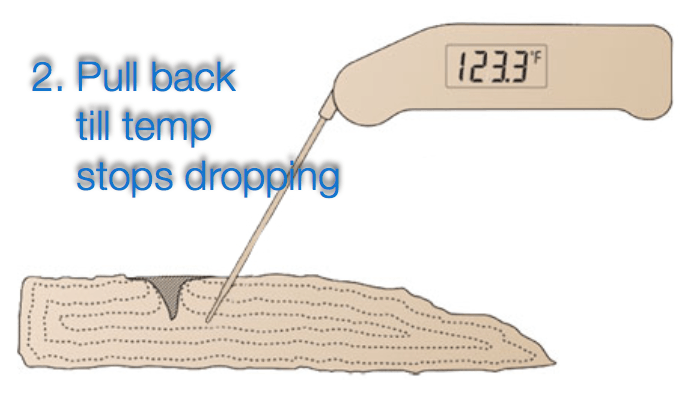
The lowest temperature reading is the one you’re looking for. This is the internal temperature of your meat, and you’ll need to cook your food until it reaches your desired pull temperature.
3. Let Your Meat Rest
One of the most important steps in the cooking process—and don’t let your neighbors forget this one—is to let the meat rest after it’s pulled from the heat. A 5 to 10-minute rest (depending on the size of the meat) will relax the proteins and help them retain moisture so the meat is tender and juicy.
Carryover Cooking & Pull Temperatures
During the resting period, they’ll also notice that the internal temperature of the meat continues to rise. That’s because the residual heat on the surface continues moving toward the center as the meat sits—this increase in temperature is called carryover cooking. Because of carryover cooking, you’ll need to remove the meat from the grill about 3-5 degrees below the desired doneness temperature for burgers and steaks, and about 10-15°F for larger roasts and whole poultry.
The lower target temperature when you remove the meat from the grill is called its pull temperature. Taking carryover cooking into account while you’re grilling is an important step in avoiding overcooked meat.
Here’s a chart to give you an idea of pull temperatures vs doneness temperatures for steaks.

Armed with these three temperature tips, your friends and neighbors will be able to consistently crank out mouth-watering chops, steaks, and burgers. Keep an eye on that grill with a cold beverage in your hand and a Thermapen in your pocket. You know—just in case.
Products Used:
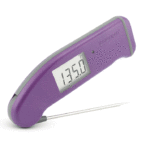 Thermapen |
|---|
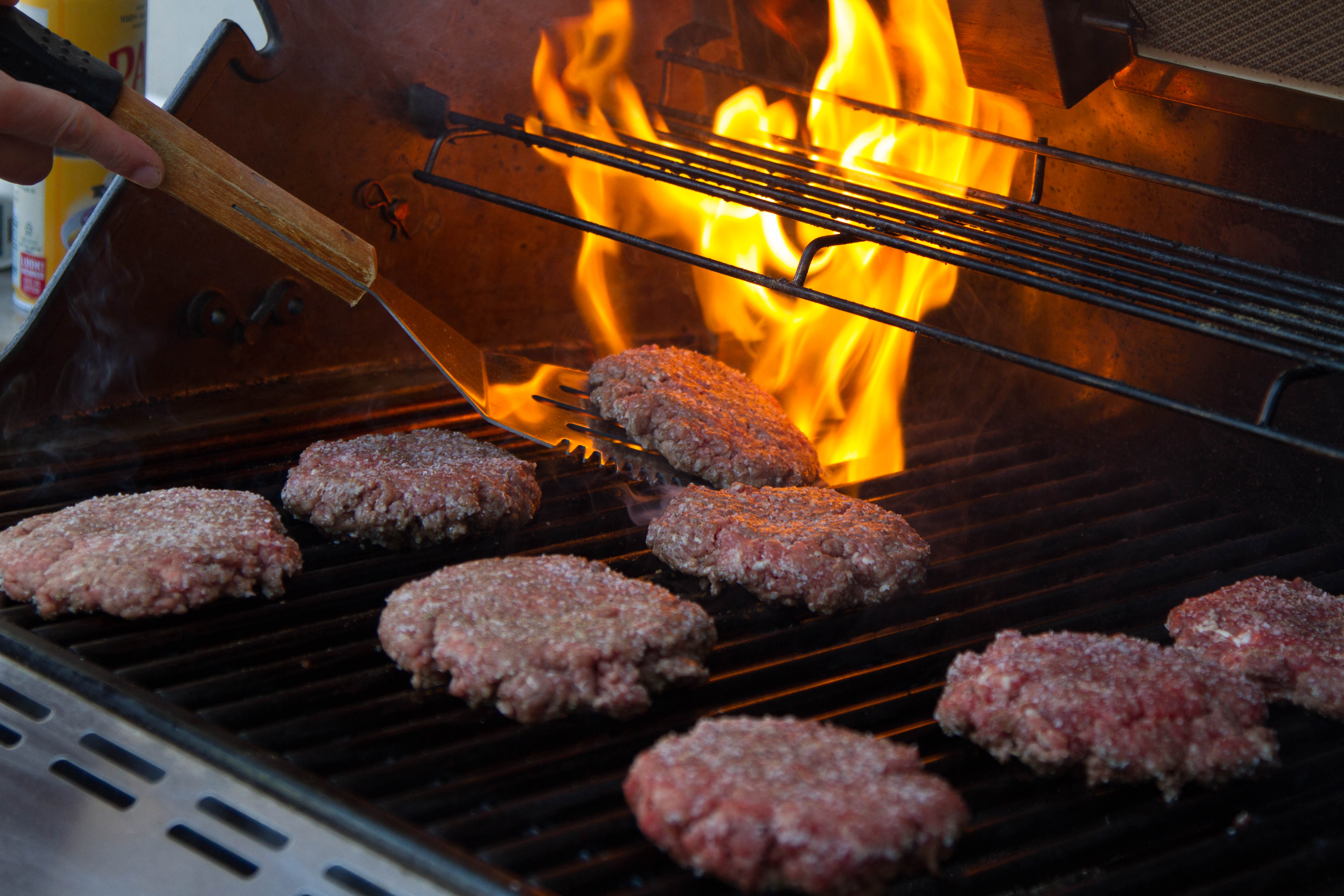

Leave a Reply